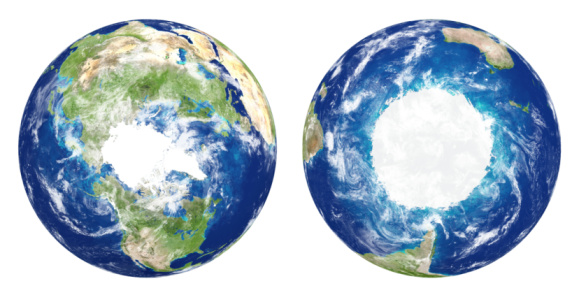
These two regions share similarities as well as differences. A major geographical difference between the two is that the Arctic is a region of water primarily surrounded by land. Antarctica, however, is a continent of land surrounded entirely by water. Wildlife found in these regions differs as well. Polar bears live exclusively in the Arctic, with a variety of other wildlife such as the walrus, narwhal, caribou, beluga whale, and many others. Penguins, however, live only in the Southern Hemisphere. Extreme conditions in Antarctica lead to low wildlife diversity, yet penguins share their home with seals, birds, whales and other marine animals.
Despite the harsh climate, indigenous peoples have inhabited the Arctic for thousands of years. Currently there are about four million people living in the Arctic, many in modern towns and cities.
Antarctica, however, has a very small population. At any given time between a few hundred and a few thousand people live in Antarctica, most for the purposes of scientific research. Antarctica does not have an indigenous population. It is a continent, but not a country. Instead, seven nations have claimed territory in Antarctica. The signing of the Antarctic Treaty in 1959 established Antarctica as an area dedicated to scientific research.
The diagram below shows the coastal population distribution in 2009, including indigenous and non-indigenous peoples.